Posted by Powee Celdran

Welcome back to the Byzantium Blogger and here we are again with another Byzantine history article! In this one being the third part of this series featuring top lists concerning the lives of certain emperors who I think have interesting stories, we will talk about possibly one of the most scheming and ambitious and often times ruthless but highly effective Byzantine emperors being Michael VIII Palaiologos (r. 1261-1282).

Michael VIII is surely remembered to be one of Byzantium’s most ruthless emperors yet also highly intelligent all while he too had a great number of achievements. Despite brutally overthrowing a well-loved dynasty being that of Laskaris that ruled the Byzantine Empire in exile- the Empire of Nicaea- by blinding the child ruler John IV Laskaris (r. 1258-1261), Michael VIII scored a number of achievements most notably recapturing the Byzantine capital Constantinople from its Latin occupiers in 1261 and thus restoring the Byzantine Empire itself. Michael VIII too had the achievement of establishing the Palaiologos Dynasty, Byzantium’s last and longest ruling dynasty that would rule for nearly 200 years from the reconquest of Constantinople in 1261 up until the city and the Byzantine Empire itself fell to the Ottomans in 1453. However, many of Michael’s achievements that saved his empire and his position as emperor and that of his family had a lot of ruthless and at times unethical acts involved such as blinding a child ruler, murders, bribing, starting rebellions, and making unpopular alliances.

Nevertheless, Michael’s actions that were somewhat unethical at least proved effective in saving the empire at times of crisis even if they were unpopular among his subjects, most especially his policy of reuniting with the Catholic Church which was a major highlight of his reign but would also lead to his downfall. This list will thus cover what I think are the 8 times Michael VIII had proven to be an “evil genius” before and during his reign as emperor. Now, in the past I have covered Michael VIII a lot in a number of articles on this site and in videos on my channel No Budget Films– the links to the videos will be found below. Before beginning this top 8 list, I will give a quick background to the life of Michael VIII Palaiologos and the Byzantine Empire he grew up in.

Follow me, Byzantine Time Traveller on Social Media:
Instagram: @byzantine_time_traveller
Facebook: Byzantine Time Traveller
Youtube: No Budget Films
Website: Byzantine Time Traveller
Deviantart: Byzantium-blogger55
Art Station: Powee Celdran Porphyrogennetos
Patreon: Byzantine Time Traveller
In 1204, the Byzantine Empire temporarily collapsed as the armies of the 4th Crusade from Western Europe captured Constantinople, the Eastern Roman Empire’s capital for over 800 years and thus establishing the Latin Empire there.
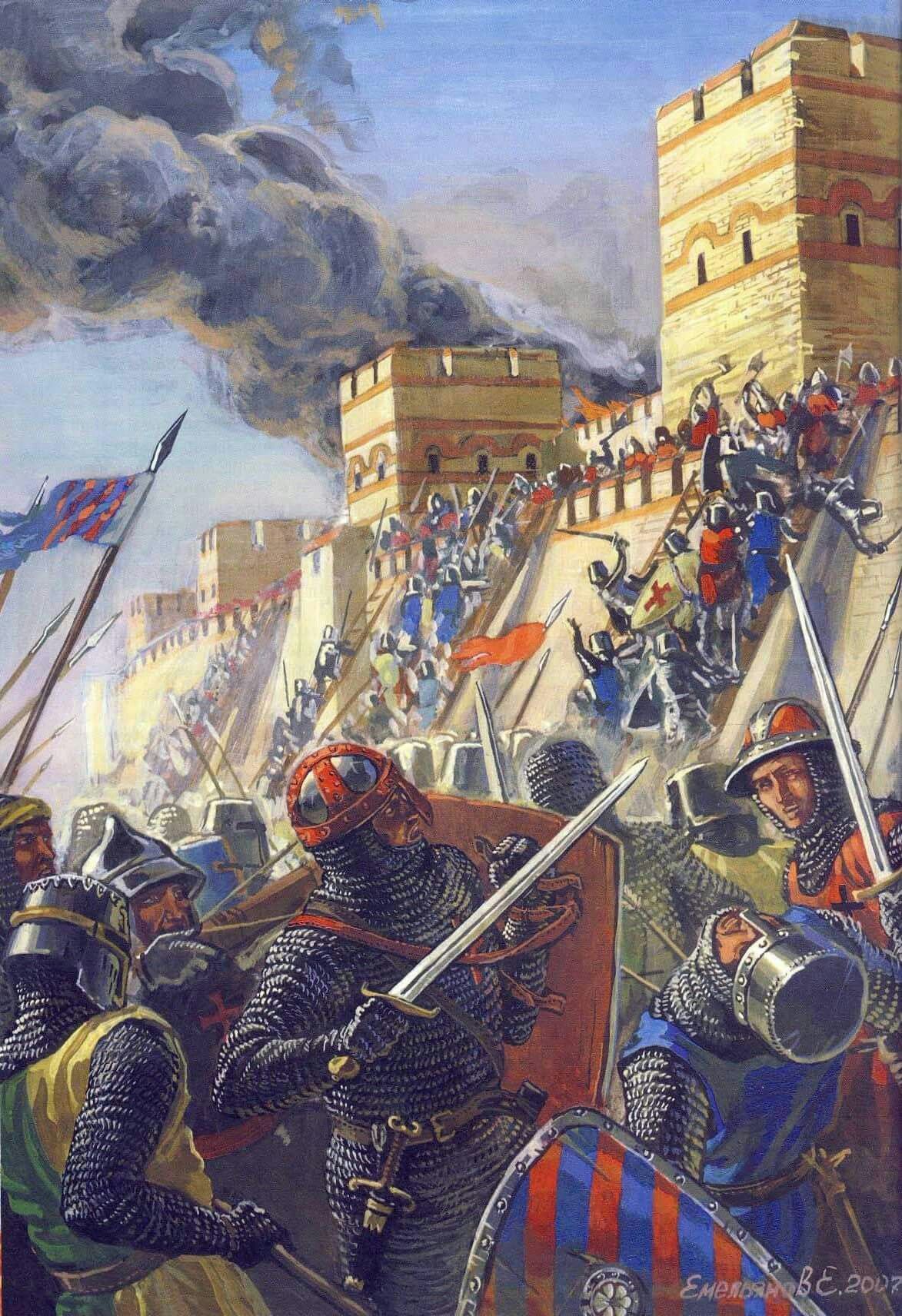
The Crusaders or Latins would then carve up what was once Byzantine territory amongst themselves which then led to the creation of several Latin states in what was once Byzantine Greece which would be vassals to the Latin Empire based in Constantinople. The Byzantines however still managed to put up a resistance against the Latin invaders by forming for themselves a number of breakaway Greek states- the 3 major ones being the Empire of Nicaea in Western Asia Minor established by refugees that fled Latin Constantinople, the Despotate of Epirus in Western Greece, and the Empire of Trebizond in Northeast Asia Minor along the coast of the Black Sea. Among the 3 breakaway Byzantine states, the Empire of Nicaea eventually grew to be the most stable and successful of them as the Byzantine Empire itself in exile. Although beginning in an unstable situation as it was threatened by the Latin occupiers of Constantinople from the north and the Seljuk Sultanate of Asia Minor from the east, the Empire of Nicaea under its first ruler Theodore I Laskaris (r. 1205-1221) eventually stabilized with all external threats more or less eliminated. Theodore I’s son-in-law and successor John III Doukas Vatatzes (r. 1222-1254) after eliminating internal threats to his rule began the expansion of the Empire of Nicaea not only into Asia Minor but into Europe as well.
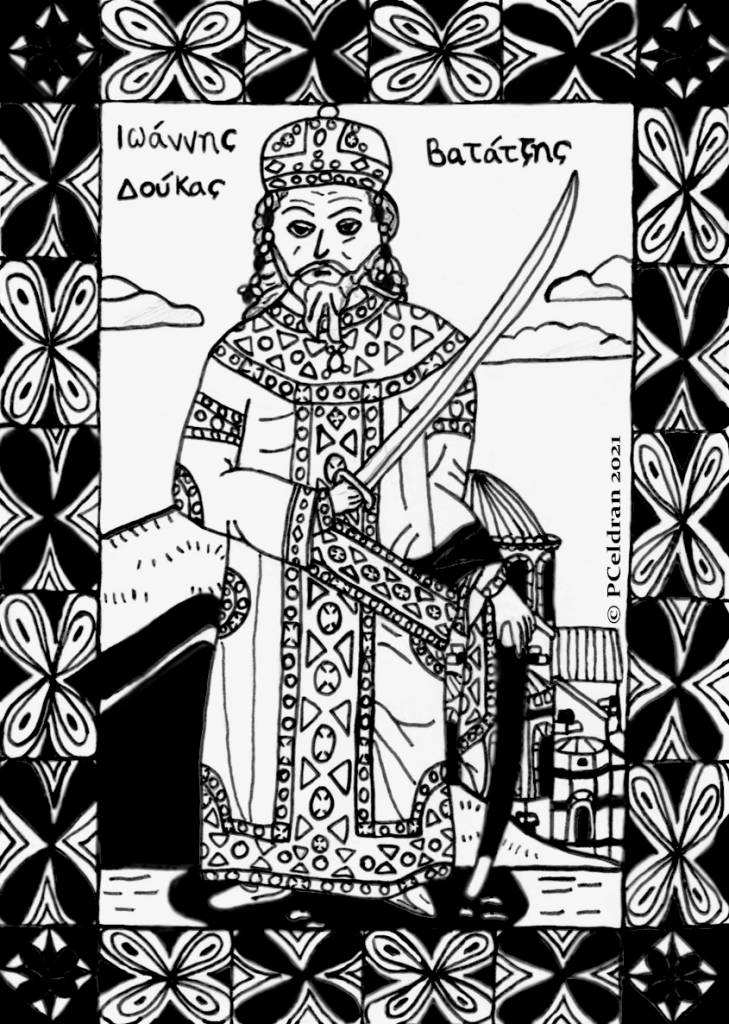
Although failing to recapture Constantinople from the Latin Empire in the siege of 1235-1236, John III brought further stability and prosperity to the Empire of Nicaea all while annexing territory by winning victories against the Latins, the 2nd Bulgarian Empire, and Nicaea’s rival Byzantine state being the Despotate of Epirus who he captured the major city of Thessaloniki from in 1246. Although still the Byzantine Empire in exile, the Empire of Nicaea still grew to be the dominant power of the region in John III’s reign all while the Latin Empire that had taken over Constantinople in 1204 had been extremely reduced in size and treasury thus becoming a failed state. It was in this Byzantine Empire in exile being the Empire of Nicaea where the future emperor Michael VIII Palaiologos was born in around 1223 or 1224 to the noble Palaiologos family which had been a prominent family of the Byzantine military aristocracy since the 11th century. Michael too was a great-grandson of the former pre-1204 Byzantine emperor Alexios III Angelos (r. 1195-1203) which thus makes him have connections to the previous ruling dynasties of Byzantium being that of Komnenos, Angelos, and Doukas. It was during the reign of the exiled emperor John III Vatatzes when Michael, the son of John III’s top general Andronikos Palaiologos began his career as a governor of the Thracian towns of Melnik and Serres which were under Nicaean rule. From an early age, Michael had already possessed imperial ambitions that in 1253, he was accused of plotting against the emperor John III. In order to prove his innocence, Michael was forced to hold red-hot irons but when refusing to do so, he was imprisoned by the emperor only to be released when swearing an oath of loyalty. For proving his said “loyalty”, John III rewarded Michael with the new military position of Megas Konostaulos being the head “police general” of the empire as well as marriage to Theodora, the grand-niece of the emperor.
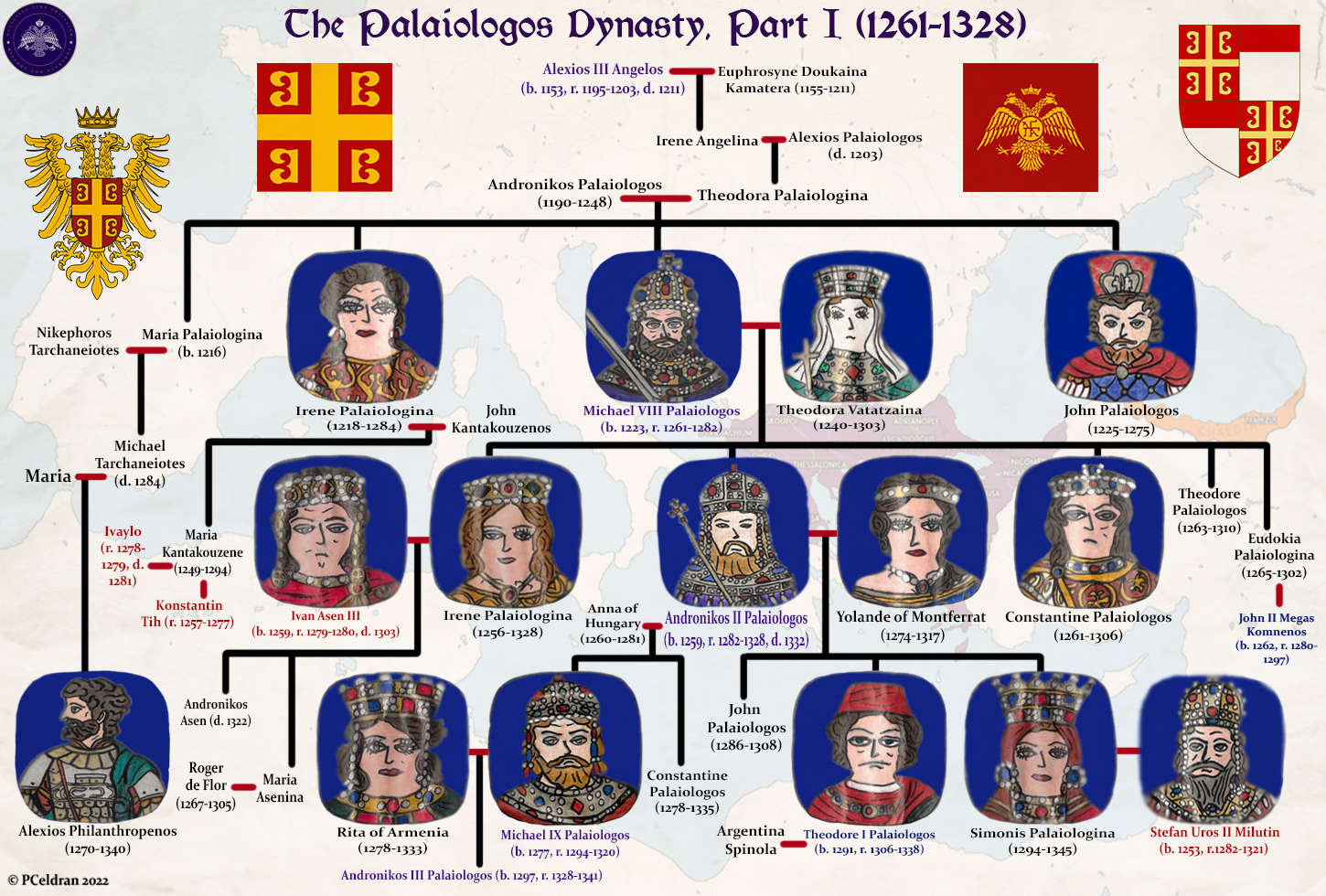
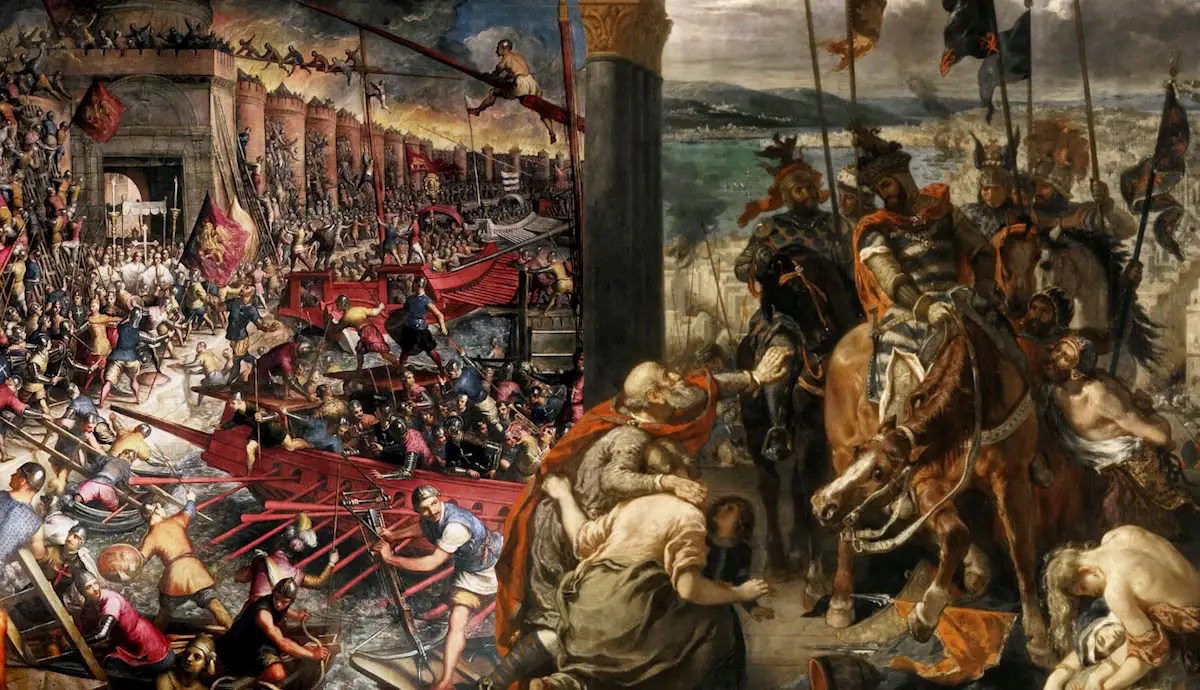
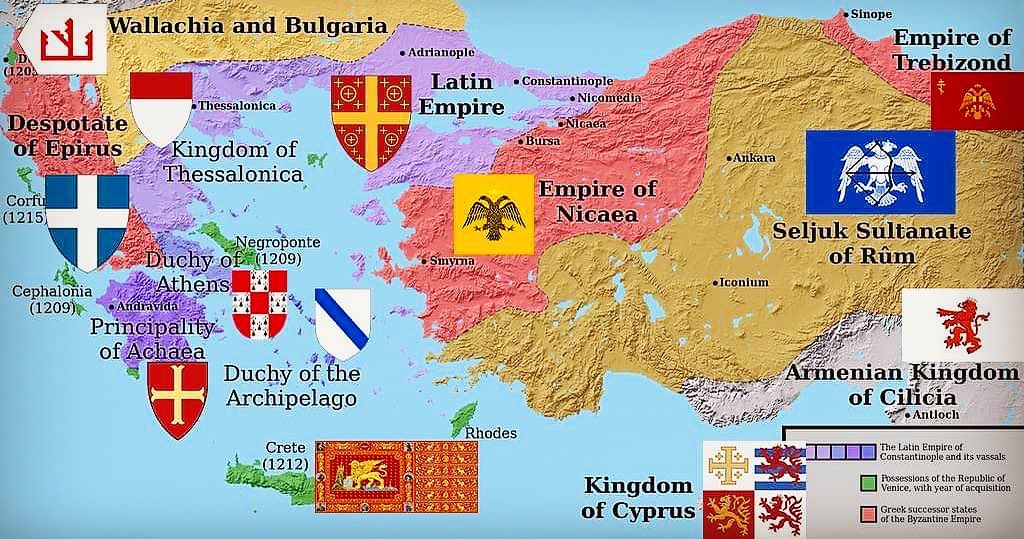
Related Articles from the Byzantium Blogger:
10 Surprising Facts About Basil II
5 Reasons to Feel Bad for Justinian II and 5 Reasons to Hate Him
Byzantine Alternate History Chapter X
Byzantine Alternate History Chapter XI
Related Videos on Michael VIII from No Budget Films:
Summer of 1261: A Byzantine Epic (2019)
War of the Sicilian Vespers: A Byzantine Epic (2020)
The 57 Years: Byzantium in Exile- Part 3 (2020)
The Last Roman Dynasty: Part 1- Michael VIII’s Imperial Restoration (2021)
The Last Roman Dynasty: Part 2- Michael VIII’s Redemption (2021)
I. His Violent Rise to Power- The Murder of the Mouzalons

Following the Nicaean emperor John III Vatatzes’ death in 1254, he was succeeded by his only son Theodore II Laskaris (r. 1254-1258) who was known to have favored commoners serving him instead of aristocrats.

Michael meanwhile despite being Theodore II’s second cousin was known to have had a strong rivalry with Theodore since childhood, and with Theodore as emperor, their rivalry grew even stronger especially since Michael represented the aristocrats of Nicaea who Theodore hated. Theodore II true enough fired and imprisoned many aristocratic generals and replaced them with commoners loyal to him, most notably the Mouzalon brothers Theodore, George, and Andronikos. Fearing imprisonment from Theodore II, Michael in around 1255 or 1256 escaped the Empire of Nicaea east to the Seljuk Sultanate of Rum to serve as a general for the Seljuk sultan Kaykaus II (r. 1246-1262) wherein Michael was to command the sultan’s Christian forces. During his time serving the Seljuk sultan, Michael was known to have fought a battle against the Mongols which however ended in a defeat for him and the Seljuks, though soon enough he was recalled back to the Empire of Nicaea by Theodore II to fight against their rival in Greece, the Despotate of Epirus. As Theodore’s health began to fail by 1257, Michael who Theodore was suspicious of was recalled from command once again and this time imprisoned again. However, shortly before Theodore II’s death in August of 1258, Michael was released from prison all while the dying Theodore named his closest friend and top advisor and general George Mouzalon as regent for his 7-year-old son John who was to succeed his father.

The aristocrats’ faction which was led by Michael was true enough shocked that the commoner George Mouzalon was to run the empire for the young John IV, thus once Theodore died, Michael together with the aristocrats orchestrated a coup to remove George and his brothers from power. George however knowing he was unpopular among the aristocrats advised them that he was going to resign as regent, however Michael who was the leader of the aristocrats convinced George to not do so, though this was meant to lead George into a trap. Just 9 days after Theodore II died, during his funeral, as the Mouzalon brothers entered the church, they were suddenly hacked to death by the Latin mercenaries under Michael’s command who had here mutinied due to their lack of pay, although the eldest Mouzalon brother Theodore survived the plot but was unheard of afterwards. Michael’s involvement in the murders was revealed when George Mouzalon’s wife fled to Michael’s house wherein Michael told her to remain silent about the murders or she too will suffer the same fate. With the Mouzalon brothers taken care of, Michael then purged all those loyal to them by having them either executed or imprisoned all while the aristocratic generals and officials previously imprisoned by Theodore II were released and reinstated to their positions.

II. The Nicaean Victory at the Battle of Pelagonia

Once the Mouzalon brothers were eliminated, Michael having the backing of the aristocracy assumed the position of regent for the young new emperor John IV Laskaris that in the course of only a few months he assumed the high court titles of Megas Doux and then Despotes. Michael too promised that he would make sure the young John IV was to be unharmed and that he would be Michael’s successor, but again this would turn out to be not the case.

On New Year’s Day of 1259, Michael VIII Palaiologos was formally crowned by the Patriarch of Constantinople in exile Arsenios Autoreianos as co-emperor of John IV wherein Michael was the one to actually wield real power over the empire with the young John IV only remaining as a puppet in the palace. In the meantime, the Empire of Nicaea’s main rival at this time, the Despotate of Epirus ruled by Despot Michael II Komnenos Doukas (r. 1230-1268) forged a multi-national alliance against Nicaea with the Latin states of Greece being the Principality of Achaea ruled by Prince William II Villehardouin (r. 1246-1278), the Duchy of Athens, and the Duchy of the Archipelago, as well as with the Serbian Kingdom to the north and the Kingdom of Sicily ruled by Manfred Hohenstaufen (r. 1258-1266) who were to provide Michael II of Epirus with troops. When hearing of this alliance against Nicaea, Michael now the co-emperor of Nicaea immediately sent an army to cross over to Europe led by his younger brother John Palaiologos and the aristocrat general Alexios Strategopoulos. Although the Nicaean forces which included several Cuman mercenaries were much smaller in number than the forces of the Epirotes and Latins combined, the Nicaeans still managed to win a decisive victory over their enemies at the Battle of Pelagonia in either July or September of 1259.

The Nicaean victory here was more or less caused by the Epirotes abandoning their Latin allies even before the battle began and the defection of Despot Michael II’s son John Doukas to the Nicaean forces. It is believed here that Michael Palaiologos himself orchestrated the disorder among their enemies before the battle by sending his agents with forged letters informing both Latin and Epirote leaders to turn on each other through rumors. Although the Latin-Epirote alliance was defeated, the contingent of the Latins consisting of the Principality of Achaea led by their prince William II resisted bravely against the Nicaeans despite losing at the end with William himself found and captured. This battle too was the last recorded mention of the legendary Varangian Guard of Byzantium fighting in battle wherein it is said that William was escorted to prison by the Varangians. Following the battle, the victorious Nicaean forces even went as far as to occupy Epirus itself, although in the following year (1260), the Nicaeans were expelled from Epirote territory when Michael II retook his lands all while his son John defected back to him.

To put it short, the Nicaean victory at the Battle of Pelagonia cleared all obstacles for Nicaea’s ultimate goal, the reconquest of Constantinople from the Latins as for one it removed a major threat to them being the Despotate of Epirus all while their victory also forced the defeated Principality of Achaea to now be Nicaea’s vassal which thus made them stop paying tribute to the Latin Empire and instead to Nicaea. With Achaea no longer a vassal to the Latin Empire, the Latin Empire itself had no more allies and source of income and so in 1260, Michael Palaiologos himself led an army to recapture Constantinople from the Latins. This attempt of Michael however failed as he both lacked a navy and had no knowledge on how to breach the city’s walls, thus Michael was forced to conclude a one-year truce with the Latin emperor Baldwin II (r. 1237-1261) all while Michael was to use the time to find himself a navy.
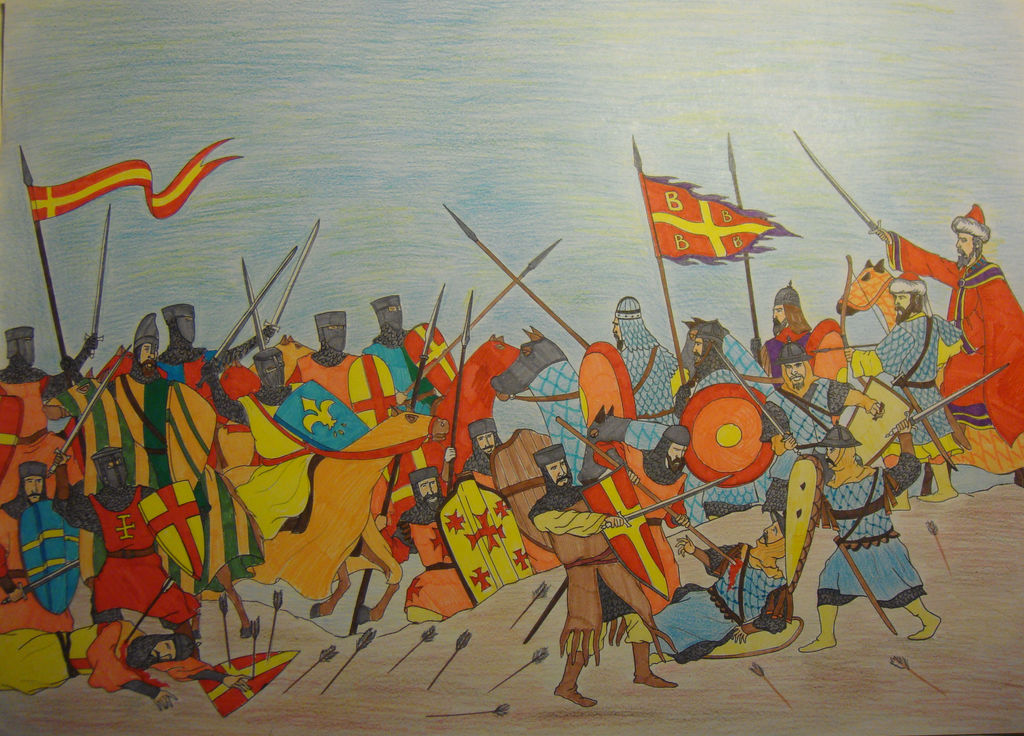
III. The Reconquest of Constantinople and Blinding of John IV Laskaris

All while Michael Palaiologos concluded an alliance with the Republic of Genoa in March of 1261 in order to take back Constantinople from the Latins wherein he granted Genoa a large number of concessions such as the use of some ports and trading privileges in Byzantine waters, he also sent his general Alexios Strategopoulos with a small task force of 800, most of which consisted of Cuman mercenaries to Thrace in order to survey Constantinople’s walls.

In July of 1261, as Alexios received information from local farmers that the main Latin garrison in Constantinople was away raiding a Nicaean held island in the Black Sea, he took it as an opportunity to lead an attack on the city despite being given orders by Michael to not engage in combat with the Latins. Here, a division of Alexios’ army managed to sneak through a tunnel beneath the walls at night, kill the sleeping guards, and open the gate to the rest of the army. In a surprise attack that only took place in the course of a single night, Alexios’ army of 800 overpowered the Latin garrison of Constantinople and thus recaptured Constantinople itself from the Latins. The last Latin emperor Baldwin II meanwhile was awoken by the noise of the Nicaeans and Latins battling each other and thus being powerless, he fled the city during the night of the Byzantine reconquest to a Venetian ship and thus headed back to Western Europe never to see Constantinople again. The Latin Empire thus fell whereas Constantinople being captured by the Empire of Nicaea returned to Byzantine rule after 57 years. Michael who was at his camp in Asia Minor eventually got the news from his sister Irene that Constantinople had been retaken, though he was not convinced about it until a messenger presented to him Baldwin II’s crown and sword that he abandoned as he fled the city.

In August of 1261, Michael entered Constantinople for the first time in his life with a triumphal parade celebrating the reconquest of the city by Alexios and its return to Byzantine rule. Once the parade was over, Michael had himself crowned once again by the patriarch Arsenios in the Church of the Hagia Sophia, this time as the restored Byzantine emperor. Following this, Michael inspected the city that had fallen to ruin under 57 years of Latin rule wherein its population had dropped to 35,000 all while several buildings lay in ruin as the Latins did not bother to repair them. Immediately after regaining Constantinople, Michael set off to repopulate the capital by relocating people from other parts of what was once the Empire of Nicaea into it whereas he too restored a number of churches, monasteries, public buildings, and the sea walls damaged by the Crusaders’ attack of it in 1204. The one obstacle to Michael VIII’s rule that remained however was the existence of his co-emperor the boy John IV Laskaris who was still ruling in Nicaea. John IV however since Michael’s takeover in 1258 remained completely powerless with his name even removed from all imperial business, and thus to finally get rid of him once and for all, Michael during the Christmas of 1261 sent his agents to Nicaea to blind John IV as Michael believed that John might try to take the throne from him in the future. With John IV blinded and thus completely disabled from ruling for life, Michael then imprisoned him for life in a castle owned by the Palaiologos family along the Asian coast of the Sea of Marmara.

Michael’s blinding of John IV in the meantime was also done to secure the establishment of Michael’s dynasty as Michael true enough had already named his infant son Andronikos as his heir and co-emperor, therefore blinding John IV meant clearing an obstacle for his son’s succession. Michael meanwhile too had John IV’s sisters married off; 2 of them to Italian nobles whereas the other one was already married to the Bulgarian tsar Konstantin Tih (r. 1257-1277), and these marriages were done in order to prevent their descendants from challenging the rule of Michael’s descendants in the future. Although Michael was now basically the undisputed ruler of the restored Byzantium, news of John IV’s blinding was eventually leaked despite Michael trying to keep it a secret and thus Michael was excommunicated by the patriarch Arsenios- a loyalist of the Laskaris Dynasty- whereas Michael was powerless to have his excommunication lifted until 1268 when he replaced Arsenios as patriarch with Joseph I. However, in 1290, during the reign of Michael’s son and successor Andronikos II Palaiologos (1282-1328), Andronikos himself visited John in the castle he was imprisoned in and even released John from imprisonment. John IV despite still being blind would live out the rest of his days in Constantinople until his death in around 1305.



IV. Further Reconquests and His Betrayal of Genoa

Although the Byzantine Empire had been restored in 1261, it was surrounded by hostile powers on all sides who more or less did not recognize the restoration of Byzantium. These included the Despotate of Epirus to the west, the still remaining Latin principalities in the south, the Second Bulgarian Empire and Serbian Kingdom in the north, and the Seljuk Sultanate and Empire of Trebizond in the east.

Although Michael VIII failed to diplomatically settle conflicts with the Kingdom of Sicily of Manfred Hohenstaufen and with the Despotate of Epirus, in 1263, he sent an army of 15,000 men with 5,000 Seljuk mercenaries to the Morea (Peloponnese Peninsula) in Southern Greece with the goal to conquer the entire Principality of Achaea ruled by William II who had recently returned to the Morea from captivity in Nicaea and broken off his vassalage to Michael VIII. Despite Michael’s army suffering a number of setbacks against the Achaean forces which also included the Seljuks mercenaries defecting to the Latin Achaeans, the Byzantines were at least able to recapture the southeastern corner of the Peloponnese Peninsula known as the region of Laconia from the Achaeans and thus establishing what would be the Byzantine Morea. In 1263 as well all while Michael’s forces battled the Achaean forces in Southern Greece, his own Byzantine fleet assisted by his allied Genoese fleet which numbered up to 48 in total encountered a much smaller Venetian fleet in the Aegean Sea off the coast of the Morea; and at this time in history, the rival naval republics of Venice and Genoa were at their usual wars against each other.
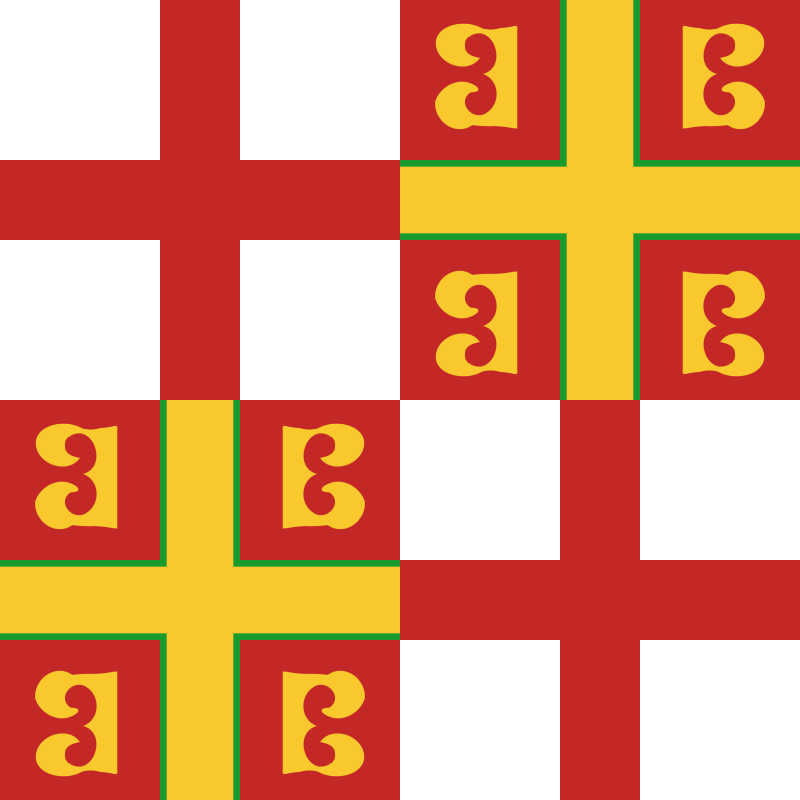
The fleets thus battled each other at the Battle of Settepozzi wherein 14 ships- both Byzantine and Genoese- engaged the Venetian ships only to be routed by the Venetians with 4 ships captured. The naval battle thus ended with a victory for the Venetians. When hearing of the Byzantines’ and Genoa’s defeat to the Venetians at Settepozzi, Michael was enraged at the Genoese navy for their incompetence that he immediately turned against his Genoese allies by dismissing 60 Genoese ships from his service and instead sought to make an alliance with Venice instead. Although Venice at this time was an enemy of the Byzantines as they for one were the power that backed the Latin Empire that the Byzantines destroyed, Michael saw it as more convenient to ally with the Venetians seeing them as the stronger naval republic as they true enough had just defeated the Genoese at a naval battle. Beginning 1263, Michael concluded an alliance with the Republic of Venice granting them the same concessions he granted to Genoa back in 1261, however this Byzantine-Venetian alliance would not last as in 1268 the Venetians had turned on the Byzantines leading to Michael having to restore his old alliance with Genoa. The Genoese meanwhile also decided to no longer engage in battle against the Venetians at sea, but this still did not prevent the Genoese from losing once again, this time at a larger scale to the Venetians at the Battle of Trapani in 1266.
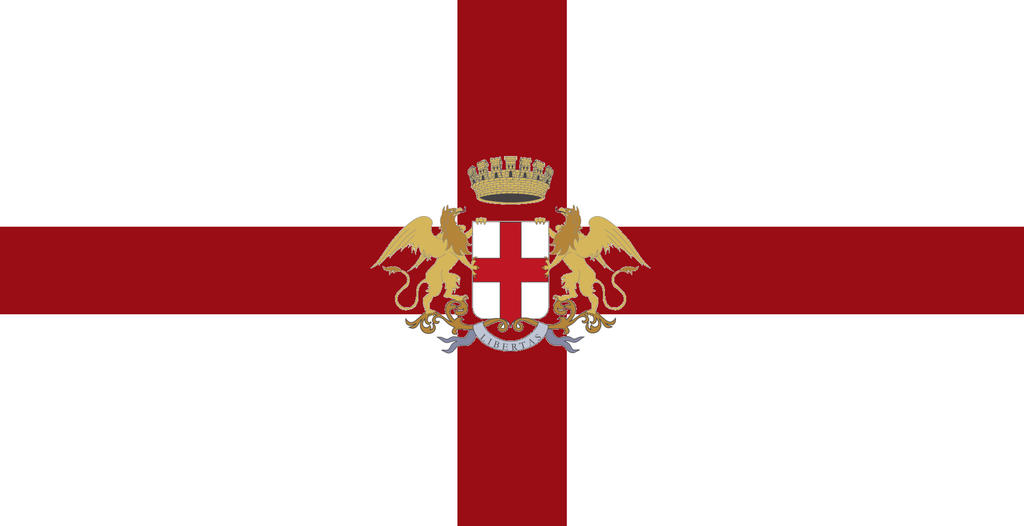
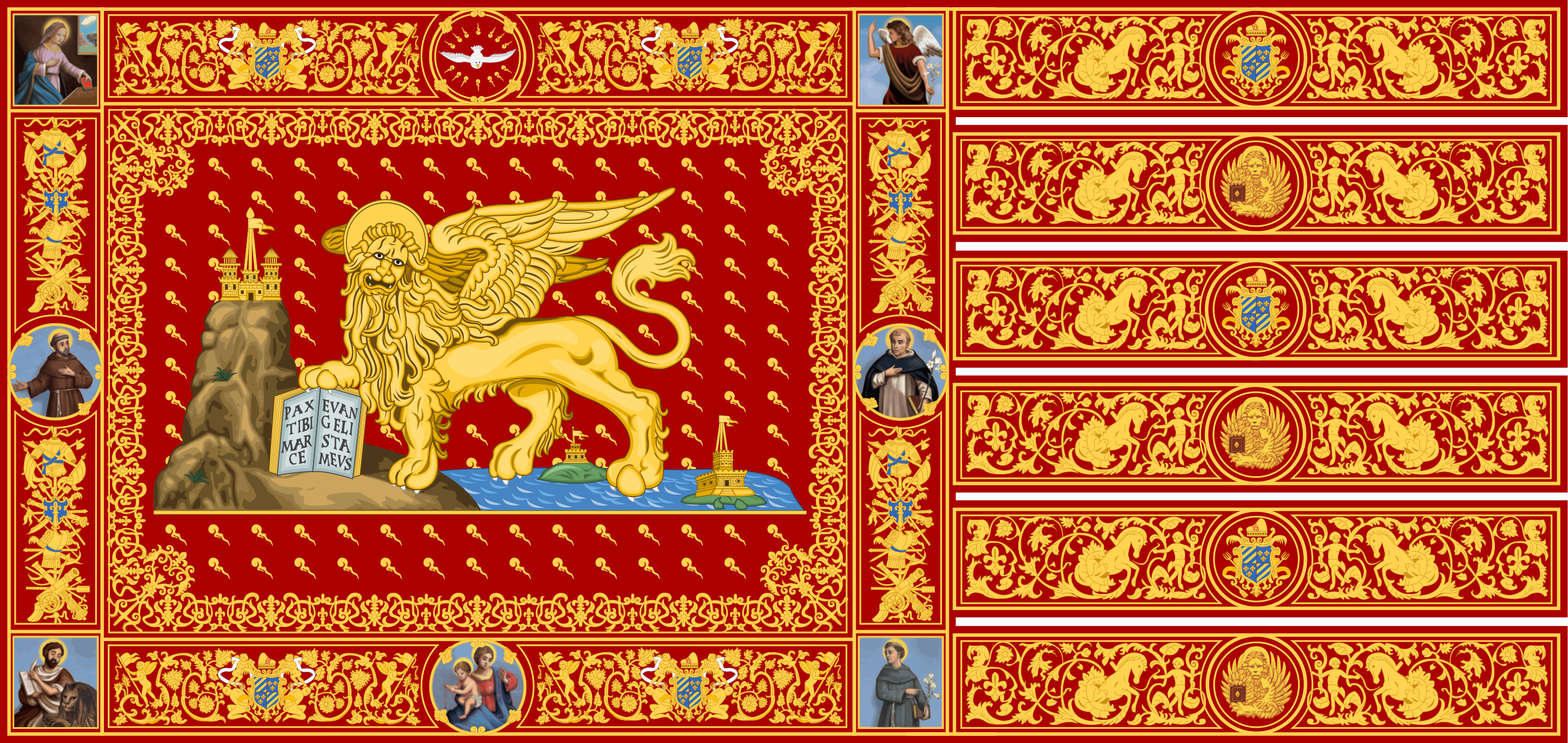

V. Marriage Alliances with the Mongols

Although Michael VIII’s Byzantium was surrounded by hostile neighbors, Michael himself as a diplomatic genius managed to for one make treaties with the Mamluk Sultan of Egypt Baybars (r. 1260-1277) and with the King of Hungary Stephen V (r. 1270-1272) wherein Stephen’s daughter Anna was married to Michael’s son and heir Andronikos; other than that, Michael managed to get the King of France Louis IX (r. 1226-1270) who was basically the most powerful ruler of Europe to recognize the restoration of Byzantium.

The one power however that had been posing a major threat to the restored Byzantine Empire like it did to everyone else were the ever-expanding Mongols from the far east. In 1265, Michael himself was ambushed in Thrace by an army of Mongols led by Nogai Khan, general of the Golden Horde- the Mongol Khanate of Russia- as Michael was returning to Constantinople only with a few troops. Here, Michael barely escaped alive to the Marmara coast as even his own officers deserted him to save their own lives. Rather than choose to fight on the defensive against the ever-expanding Mongols who had constantly threatened the powers of Europe, the Middle East, and Asia, Michael saw their attack on him as an opportunity to settle off their threat diplomatically and possibly even forge an alliance with them. Michael true enough decided to get the same Nogai Khan who attacked Thrace as his ally by sending off his illegitimate daughter Euphrosyne to Russia in order to marry him. Additionally, Michael also sought to conclude another alliance with the Mongol power of Persia known as the Ilkhanate ruled by Hulagu Khan (r. 1256-1265)- the same Mongol leader who sacked and destroyed Baghdad in 1258- by having his other illegitimate daughter Maria marry him. However, before Maria reached Persia, Hulagu had died in 1265, thus when arriving in Persia, Maria was instead married to Hulagu’s son Abaqa Khan (r. 1265-1282), and as the wife of the khan, Maria would be an influential Christian leader among the Mongols. Following Abaqa’s death in 1282, Maria would return to Constantinople wherein she would establish a monastery which is now known today as “St. Mary of the Mongols” named after her.


VI. Dealings with Charles of Anjou and the Union with the Catholic Church

In 1266, Michael VIII would gain a new challenger to his rule and empire, and this would perhaps be the deadliest threat to him which was the Frenchman Charles of Anjou of the Capetian Dynasty and younger brother of King Louis IX of France. Charles in 1266 with the backing of the pope Clement IV invaded Hohenstaufen held Italy wherein he defeated the forces of the King of Sicily Manfred Hohenstaufen at the Battle of Benevento wherein Manfred himself was killed, and thus Charles had taken over Southern Italy and began calling himself as “King of Sicily”.
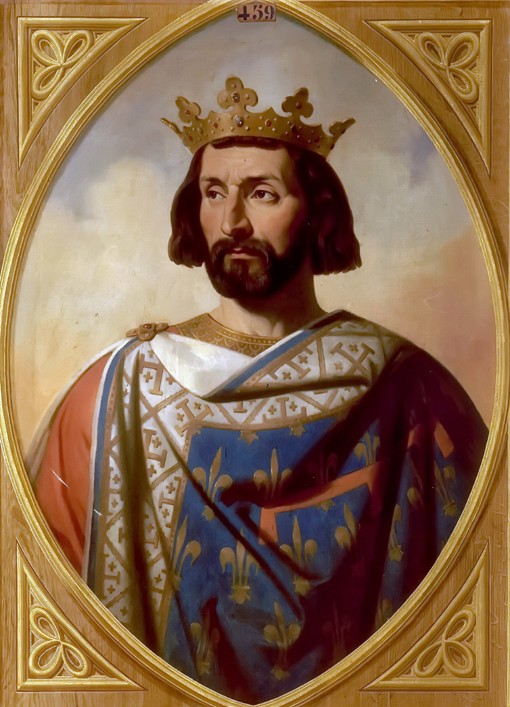
To further make things worse for Michael, Charles and Pope Clement IV sealed an anti-Byzantine alliance known as the Treaty of Viterbo with all of Michael’s enemies namely the Prince of Achaea William II and the former Latin emperor Baldwin II in 1267 all while Venice too joined the alliance; the aim of this alliance was to take Constantinople back for the Latins and destroy Byzantium once and for all. Charles on the other hand further expanded his power in 1268 by invading Sicily which he thus made as his naval base in order to invade Byzantium. Now for Michael, the only solution he saw to prevent the rising threat of Charles of Anjou was to submit himself and his empire to the pope and Catholic Church as by doing this, Byzantium would become a Catholic power thus giving the Catholic ruler Charles no reason to invade a fellow Catholic power. Michael however failed to achieve this said union with the Catholic Church as Pope Clement IV died in 1268, so instead Michael tried to get Charles distracted by writing a letter to Charles’ brother Louis IX of France to ask Charles to provide him with troops for his Crusade in Tunisia.
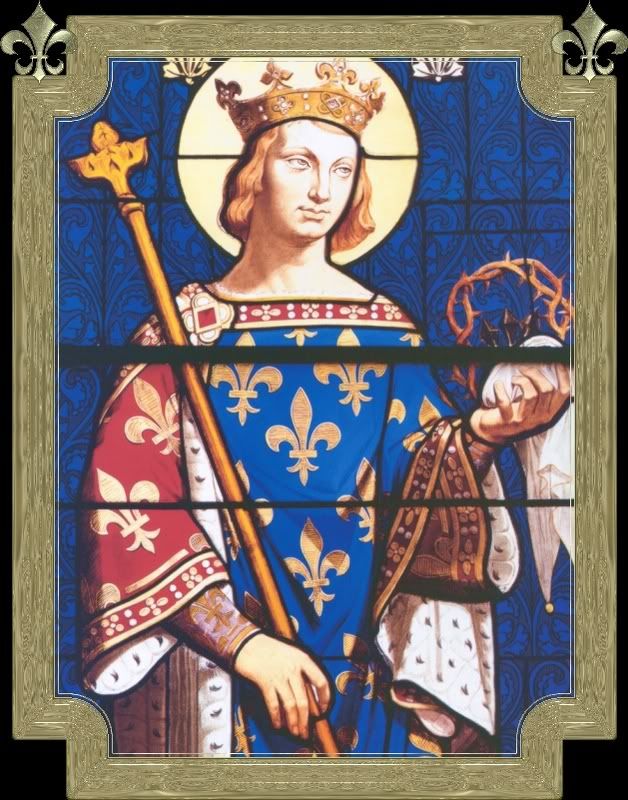
Charles true enough was delayed from attacking Byzantium as in 1270, most of his troops were forced to fight for his brother Louis IX in his Crusade known as the 8th Crusade, however in the same year the 8th Crusade failed with Louis IX’s death. Charles thus took this as an opportunity to launch a naval attack on Byzantium, though this attempt ended in failure as a storm destroyed Charles’ fleet, thus preventing Charles from launching an expedition against Byzantium for many years. Some years later in 1274 as the Church Council of Lyon in France was being held, Michael seeing this as an opportunity to unite the Byzantine Orthodox and Latin Catholic Churches sent his own representatives there to submit to the new pope Gregory X. True enough, Michael’s submission of his empire to the pope was a success, and here at the Council of Lyon in 1274, the union between both Churches were sealed with the blessing of the pope, thus more or less healing the Great Schism between both Churches since 1054.
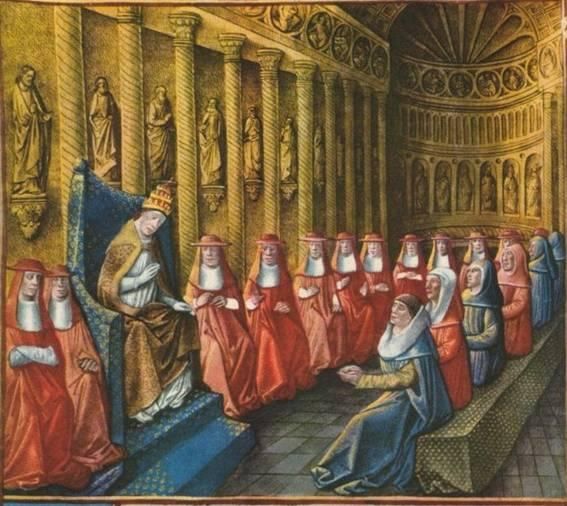
However, back in Constantinople, this Church Union of Michael was not well received by the people as their memory of the Latin Catholics’ sack of Constantinople in 1204 was still fresh, thus they all saw Michael as a traitor for submitting to the very enemy he destroyed when recapturing Constantinople in 1261 being the Latin Catholics. Michael VIII thus further lost his popularity as first of all he already lost it for blinding John IV and now he even further lost it for betraying his Orthodox people. Michael’s Church Union true enough was to have such great consequences for him that his older sister Irene became his enemy for doing this all while the Patriarch of Constantinople Joseph I resigned as he could not accept the fact of submitting to the pope. Michael VIII however was still willing to persist with this Church Union he agreed to and in order to make it seem like he was serious about it to the pope, he replaced Joseph I as Patriarch of Constantinople with John XI Bekkos who strongly supported the union all while Michael too had anyone who protested or spoke against his Church Union jailed, exiled, or even blinded. True enough, due to so many anti-Unionists being imprisoned under Michael, there was soon enough no more prisons in the empire to keep them that Michael later had to issue the death penalty on those who opposed his policy of Church Union. Furthermore, Michael’s attempt at submitting to the pope for Church Unity would also set a standard for future Byzantine emperors in order to seek military aid from the Catholic west.

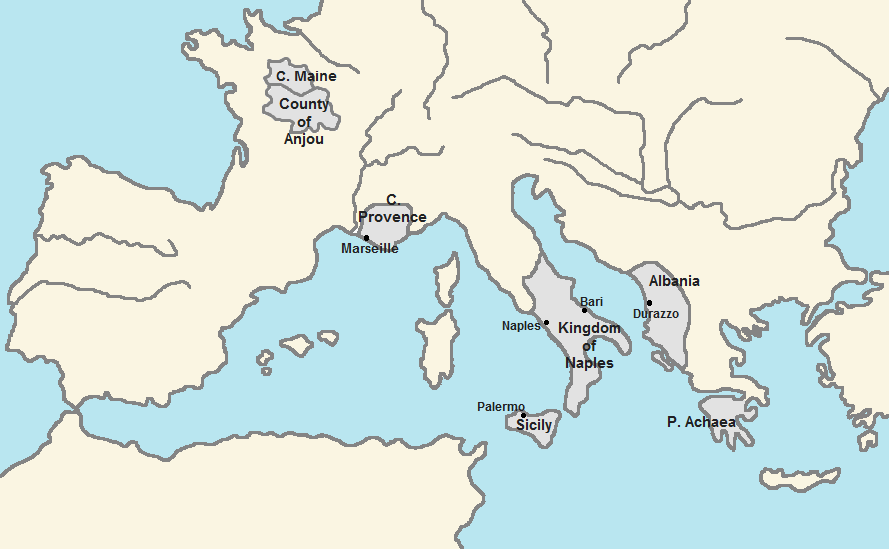
VII. Byzantine Involvement in the Bulgarian Civil War

In 1277, Byzantium’s northern neighbor being the Second Bulgarian Empire- founded in the late 12th century after declaring independence from Byzantine rule- fell into a state of civil war when angry peasants decided to revolt against their tsar Konstantin Tih.
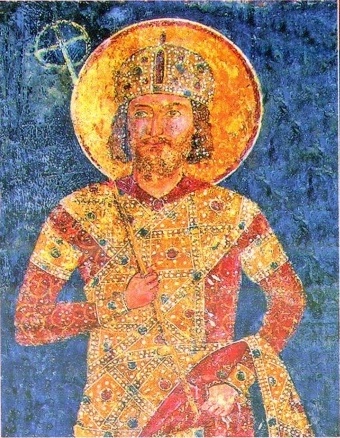
The main reason for the peasants’ uprising beginning 1277 was mainly due to the inability of the tsar to send his forces to protect them from the constant Mongol raids on Bulgaria’s northern frontier, the Danube River led by no other than Michael VIII’s son-in-law Nogai Khan of the Golden Horde. Led by a certain charismatic peasant named Ivaylo, the peasants of Northern Bulgaria who broke out in revolt defeated a Mongol raid and afterwards confronted the Bulgarian army led by the tsar himself in battle wherein the peasants won the battle with the tsar Konstantin himself personally slain by Ivaylo. With the tsar dead, Ivaylo then proceeded to capture a number of fortresses leaving only the Bulgarian capital Tarnovo under the control of the widowed Bulgarian empress Maria, Michael VIII’s niece. Meanwhile in Byzantium, Michael VIII when seeing that he could manipulate the situation in Bulgaria to his advantage married off his daughter Irene to a Bulgarian noble and relative of the ruling Bulgarian dynasty living in Byzantium who was then proclaimed as Tsar Ivan Asen III all while Michael too sent gifts to the Bulgarian nobles or boyars to recognize Ivan Asen III as their ruler instead of the rebel Ivaylo.

Eventually in 1278, the Bulgarian empress Maria who despised her uncle Michael VIII agreed to join forces with Ivaylo and thus opened Tarnovo to him and soon enough married him, thus making Ivaylo Bulgaria’s new tsar. However, due to being a peasant, Ivaylo lacked the skills needed in running a kingdom and thus Michael was able to exploit Ivaylo’s weakness by having his troops annex some of Bulgaria’s southern territories which were left undefended all while having the Mongols led by Nogai Khan resume their attacks on Bulgaria’s northern border to simply get Ivaylo away to fight them. Although initially successful in defending the first Mongol attack, Ivaylo would not succeed in fending off the second attack wherein he was this time besieged by the Mongols at a fortress south of the Danube. With Ivaylo away from Tarnovo, Michael VIII in 1279 thus saw it as the perfect opportunity to install his Bulgarian puppet Ivan Asen III who was thus welcomed into Tarnovo as the new tsar when the nobles began spreading rumors that Ivaylo had died all while the empress Maria was exiled back to Constantinople. Ivaylo meanwhile managed to survive the Mongol attacks and return to Tarnovo taking Ivan Asen III and his supporters by surprise.
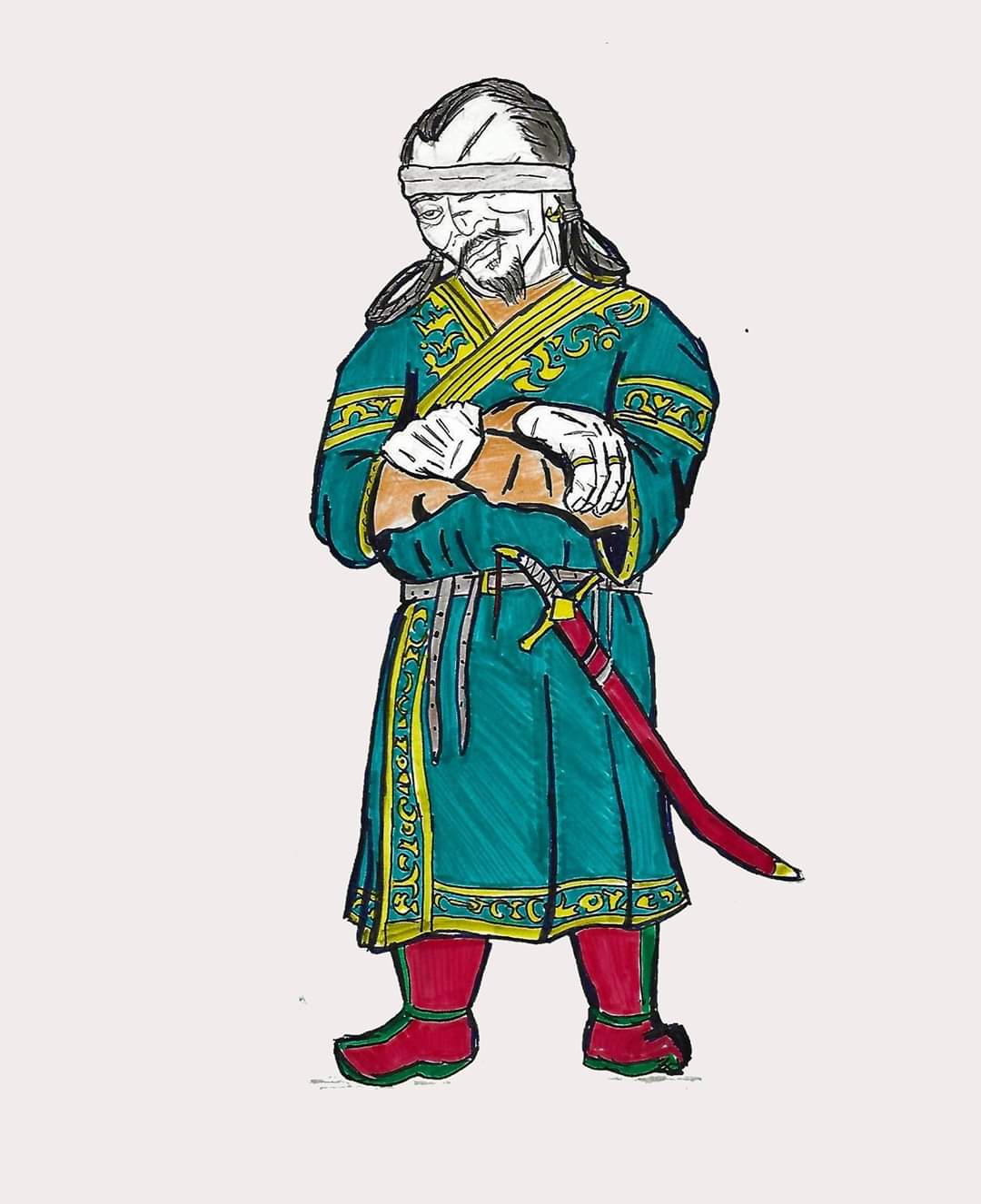
With Ivaylo still refusing to surrender his claim as Tsar of Bulgaria, Michael VIII sent 2 armies to attack Ivaylo in Bulgaria in which Ivaylo managed to defeat both armies sent against him in 2 different battles. Due to Ivaylo’s victories over the Byzantine forces, Ivan Asen III and his wife Irene cowardly fled Tarnovo for Constantinople seeing that Ivaylo could not be defeated. Michael VIII however was so infuriated with his daughter and son-in-law for their cowardice that he now refused to support Ivan Asen III and thus Ivan too lost his position as Tsar of Bulgaria as in Tarnovo in 1280, the nobles elected one of their own being George Terter I (r. 1280-1292) as the new Bulgarian tsar. Ivaylo on the other hand gradually lost a great amount of support as many of his allies deserted him due to the never-ending state of the civil war in Bulgaria and his inability to gain the support of the nobles. Without much support left, Ivaylo in 1280 fled north across the Danube River into Nogai Khan’s territory hoping to get the support of Nogai and the Golden Horde. Word of Ivaylo fleeing to Nogai however reached Michael VIII in Constantinople who then sent his son-in-law and the former Bulgarian tsar Ivan Asen III to Nogai in Russia to negotiate and send gifts to Nogai. Although Ivaylo was initially received well by Nogai, during one dinner feast, Ivan possibly being given orders by Michael reminded Nogai that Ivaylo was an enemy of his father-in-law (Michael) and thus deserved to die. Nogai thus suddenly drew his sword and stabbed Ivaylo to death claiming to do it in honor of his father-in-law Michael, thus ending the problem of Ivaylo once and for all.

VIII. Byzantium’s Role in the Successful “Sicilian Vespers” Revolt

Michael VIII’s reign as a whole true enough saw many victories for the Byzantines whether direct or indirect as for one in 1275, the Byzantine navy scored a decisive victory over the fleet of the Latin states of Greece at the Battle of Demetrias despite previously losing to them at the Battle of Neopatras.
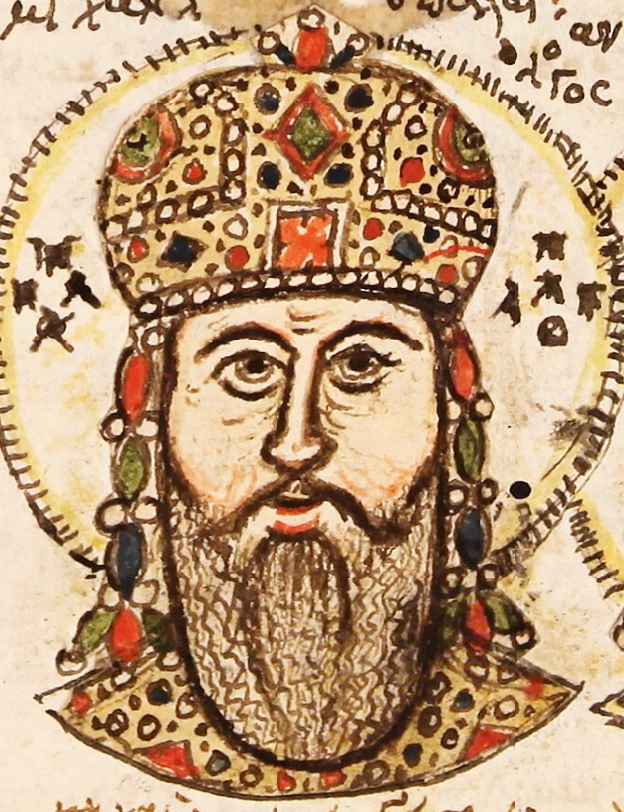
In the meantime, Michael’s archenemy from the west Charles of Anjou still ruling as the King of Sicily in 1280 sent an army of 8,000 to invade Byzantine Albania. Although the French forces of Charles besieged the Byzantine fortress of Berat in Albania, a Byzantine army led by the general Michael Tarchaneiotes who was the emperor’s nephew managed to lift the siege and expel the French invasion in 1281 all while capturing Charles’ general Hugh de Sully. Despite the Byzantine victory over Charles’ land invasion in 1281, in the same year a new pope was elected being the Frenchman Martin IV who was blindly loyal to Charles of Anjou. The new pope thus excommunicated Michael VIII without any warning despite Michael having now submitted to the Catholic Church, therefore giving Charles every reason to invade Byzantium.
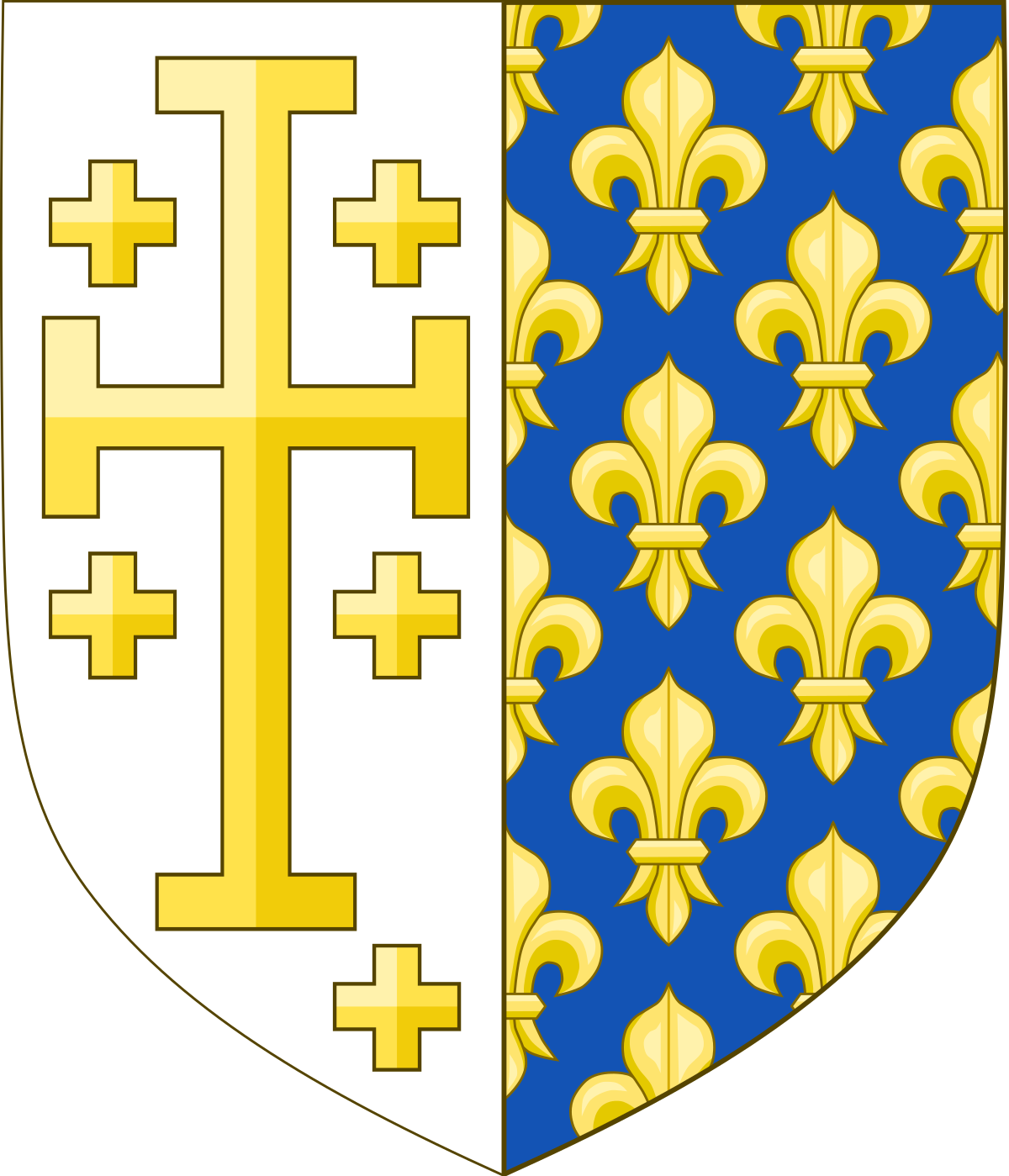
Due to the previous failure of Charles army’s land invasion of Byzantium, Charles then turned to employing a strategy of having a naval invasion that would directly invade Constantinople and thus in order to carry out this ambition, Charles assembled a massive fleet in Sicily as well as in Naples, Southern France, and in his allied Latin territories in Greece. Knowing that Michael’s rule was unpopular among his subjects in Byzantium and that he had multiple enemies on all sides, Charles exploited the situation by allying with Michael’s enemies notably the break-away Byzantine states of Epirus and Thessaly, the Serbian kingdom under its newly crowned king Stefan Uros II Milutin (r. 1282-1321), and the Second Bulgarian Empire under Tsar George Terter I. Michael however did the same by forging additional alliances against Charles, here with the Mamluk Sultanate of Egypt and most prominently with the Kingdom of Aragon in Spain under King Peter III (r. 1276-1285) who too was an enemy of Charles.

In early 1282, Charles was fully set to launch his invasion of Constantinople but before being launched, a rebellion among his subjects in Sicily broke out wherein the people of Palermo following the Easter Sunday Mass suddenly massacred the French garrison there. Apparently, Michael knowing Charles’ rule over his people of Sicily was unpopular for his harsh taxation and bad treatment to them exploited the situation by paying off the local lords of Sicily to make their people break out in revolt. Within the same year (1282), the rebels overran the entire island of Sicily and expelling Charles’ forces from it all while later that year, Peter III of Aragon arrived in Sicily with an army and fleet and when being welcomed by the rebels took over the island making it part of the Crown of Aragon. Charles thus lost control over Sicily which therefore aborted his naval invasion of Byzantium all while he too would die a broken man in 1285.
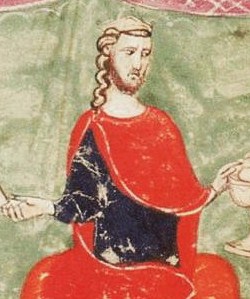
Michael VIII at least lived long enough to see Charles’ invasion of his empire aborted and Sicily falling under the rule of his ally being Peter III, however Michael himself did not have much longer to live all while his empire too was still surrounded by hostile powers, namely Serbia whose king Stefan Milutin began raiding Byzantine territory in the Balkans claiming to do it in the name of the Orthodox faith as he considered Michael an enemy of it for submitting to the pope. In December of 1282, Michael when traveling in Thrace died of an illness in a small village and due to being seen as a heretic for submitting to the pope, he was denied a proper Christian burial in Constantinople, instead he was buried at a simple grave in a monastery in the Thracian coast of the Sea of Marmara. Following his death, Michael was succeeded by his son and heir Andronikos II Palaiologos whose first act as emperor was to cancel his father’s policy of Church Union and return Byzantium to Orthodoxy.
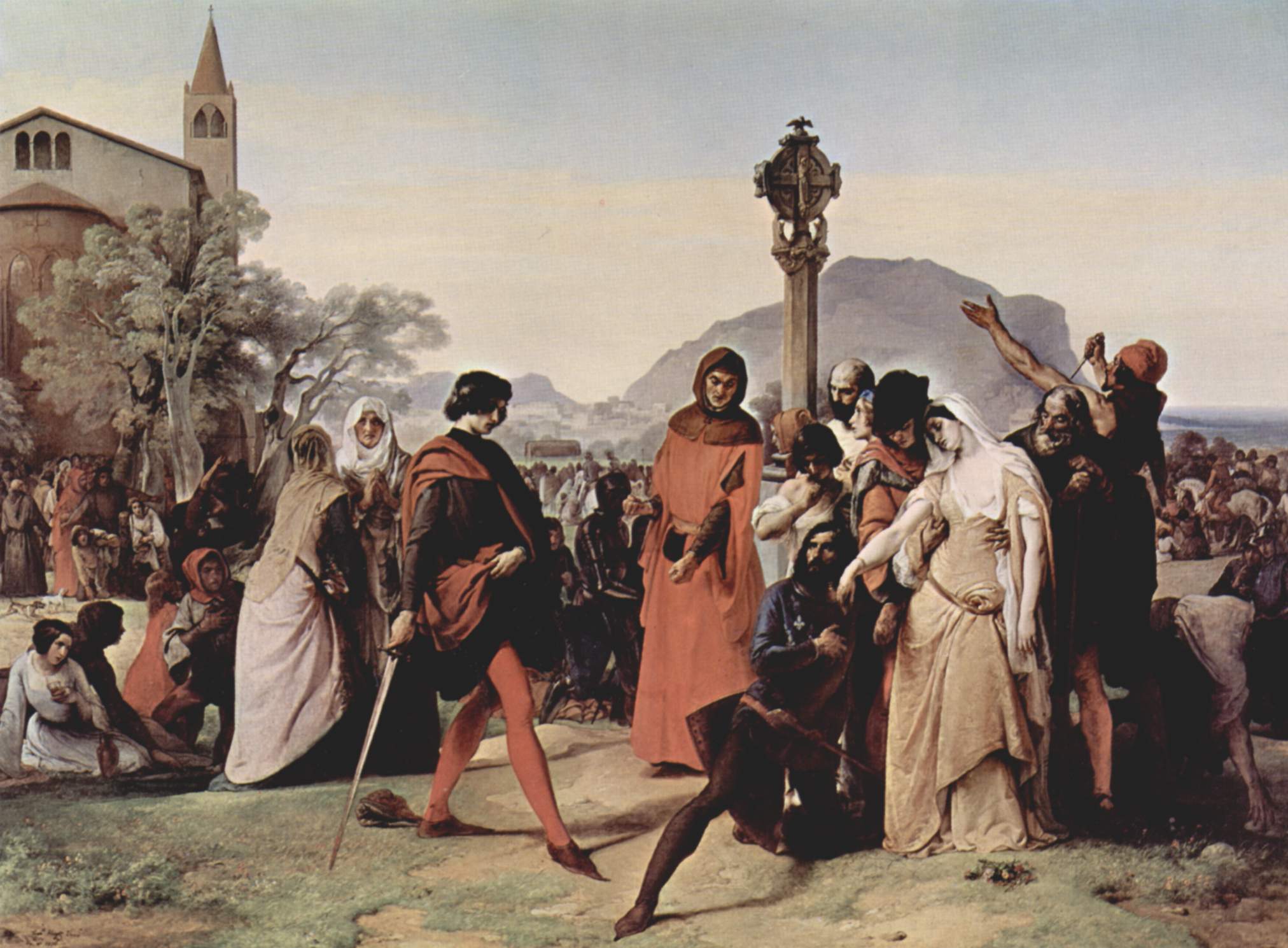
Conclusion

And now this is about it for this article covering the life and highly eventful though controversial reign of Michael VIII Palaiologos. For having a number of achievements such as taking back Constantinople from the Latins and repopulating the city from 35,000 to 70,000 inhabitants, stabilizing the empire’s borders, and preventing a massive invasion through the revolt of the Sicilian Vespers, Michael VIII thus more or less can make it to the list of the greatest Byzantine emperors and is surely a defining figure of 13th century Byzantium.

However, despite his achievements, Michael’s reign also saw a number of failures such as his neglect of defending the empire’s eastern frontier in Asia Minor against the Seljuks and the expanding Turkish states known as the Beyliks which would later prove fatal for the empire and thus Michael himself could be blamed for Byzantium’s eventual loss of all their territories in Asia Minor for simply focusing his attention west instead of east. Other than that, all while Michael had achieved a lot as emperor, his means for achieving his end goals may have been rather unethical, deceitful, and ruthless such as blinding a child emperor and murdering his regent and submitting to the Catholic Church despite it meaning betraying his people, but at the end, he still achieved his goals which thus more or less saved his empire and established his dynasty which would be Byzantium’s last and longest ruling one. As already mentioned, Michael’s greatest failure was to protect his empire’s eastern frontier from the expansion of the Turks, however his other failure was also in submitting his empire to Catholicism as despite it securing the empire in the short-term, it would continue to create further division in Byzantium in the years to come as Michael’s example true enough set the standard for future emperors to consider submitting to the pope for help from the west. Now what are your thoughts on Michael VIII and his rule? I would like to thank you all for reading this article and please continue to support me by following and subscribing to my sites!
